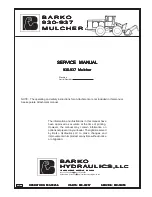
P/N 95P-6001-00 (October 2020)
Wayfinder DVL Guide
Page 12
EAR-Controlled Technology Subject to Restrictions Contained on the Cover Page.
Electrical Integration Considerations
Grounding Recommendations
The Wayfinder has three isolated grounds to achieve the desired performance levels of the instrument.
The grounding systems are as follows:
•
Communication ground
•
Power ground
•
Chassis ground
Multiple grounds connected to a vehicle hull or to a vehicle chassis can have undesirable consequences.
Grounding problems can be avoided by implementing prudent grounding schemes.
The grounded systems noted above are isolated from each other. The Power Ground is isolated from the
Chassis Ground by an isolation / ground noise filter circuit. This ‘link’ between these two grounds is sus-
ceptible to EMI from outside sources if the isolation is not properly maintained outside the Wayfinder.
If the Wayfinder’s isolation / ground noise filter circuit is shorted, the Wayfinder may experience an in-
creased noise floor, ultimately propagating into the signal receivers.
This same isolation circuit will be shorted if the chassis (DVL GND) is in direct contact with the vehicle
chassis (vehicle GND) and the Power supply ground connected to the Wayfinder is also connected to
the vehicle chassis (vehicle GND).
The Wayfinder chassis is anodized, thereby providing electrical insulation when the instrument is
mounted into what are usually metal hulls. The anodized coating is required to maintain chassis ground
isolation.
Another potential electrical path bypassing the isolation/ground filter can occur through seawater. The
current generated can pass via the Wayfinder anode, (or scratches in the Wayfinder anodized coating),
through the seawater, and then back to the hull (or frame) to the vehicle. The likelihood of this ground
path occurring is increased if the hull of the vehicle is connected to the Power ground of the Wayfinder
through the vehicle’s grounding circuitry. Typically, this resistance is very high resulting in only a few mi-
croamperes of current and is limited by the size of the Wayfinder anode and the distance between the An-
ode and the grounded hull of the vehicle (the greater the separation the greater the resistance).
For the condition described, if the exposed surface resistance is great, the Wayfinder will not be adversely
affected, as is usually the case. For conditions where the surface resistance of the Wayfinder chassis and
vehicle are low, undesired interferences will occur.
Another way that you can have undesired grounding of the Wayfinder to the frame or hull of a vehicle
is that mounting holes can lose their anodized coating by scraping of the anodized inner wall with the
mounting screws. The use of an isolation plate and plastic bushings and washers are good practices to
avoid this grounding path.
In summary, bypassing or shorting the Wayfinder isolation / ground noise filter circuit will increase the
sensitivity of the Wayfinder to vehicle noise, which will increase noise floor in the instrument and in the
data, thereby resulting in a reduced operational range and data contamination from interference. Addi-
tionally, bypassing of the Wayfinder isolation/ground filter can lead to accelerated corrosion.
















































